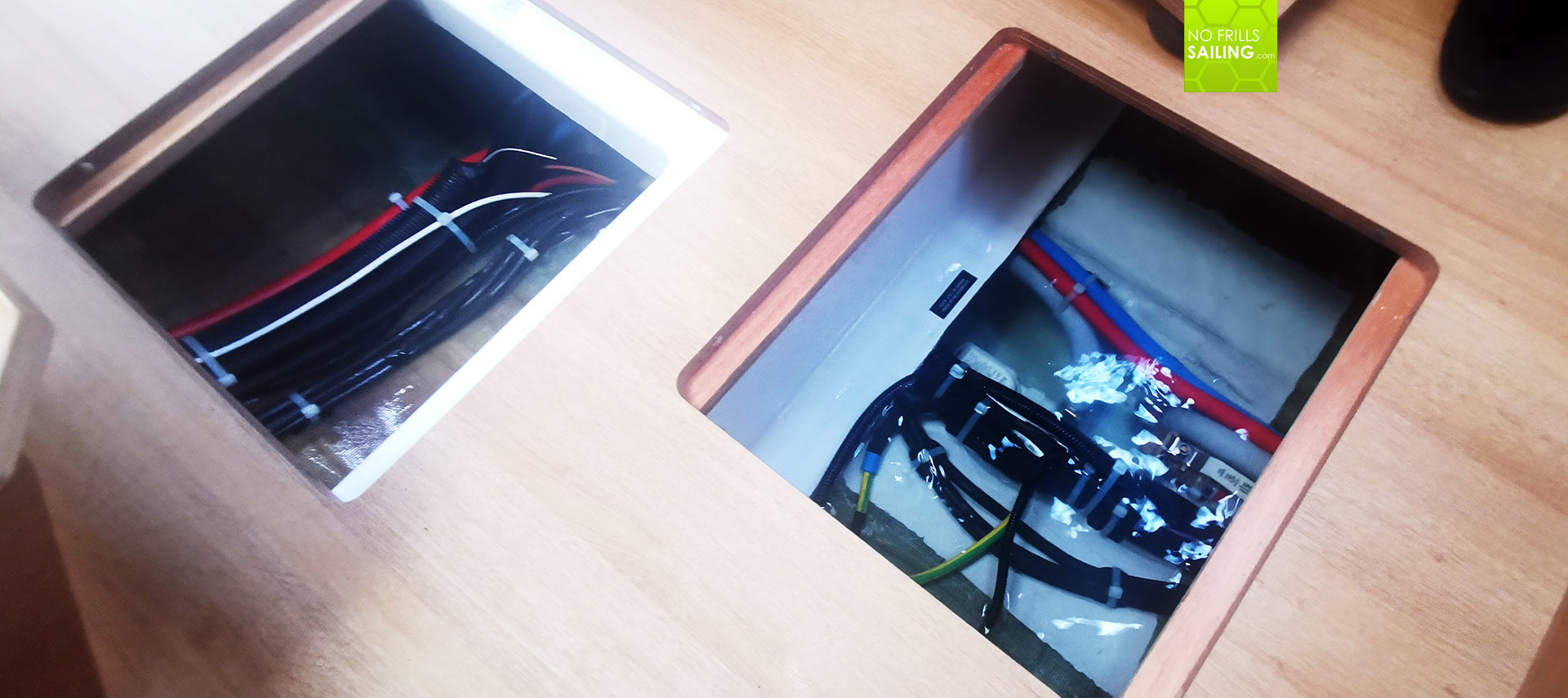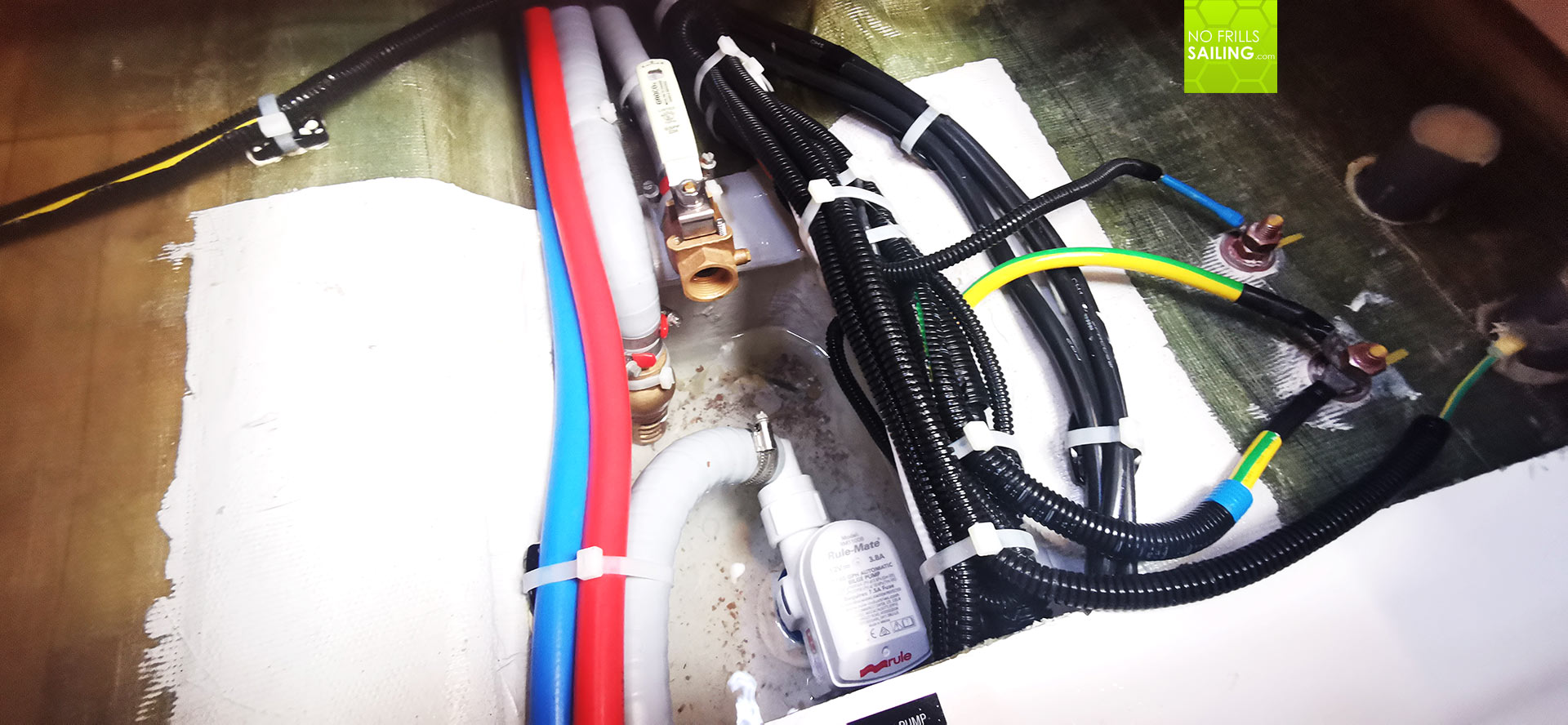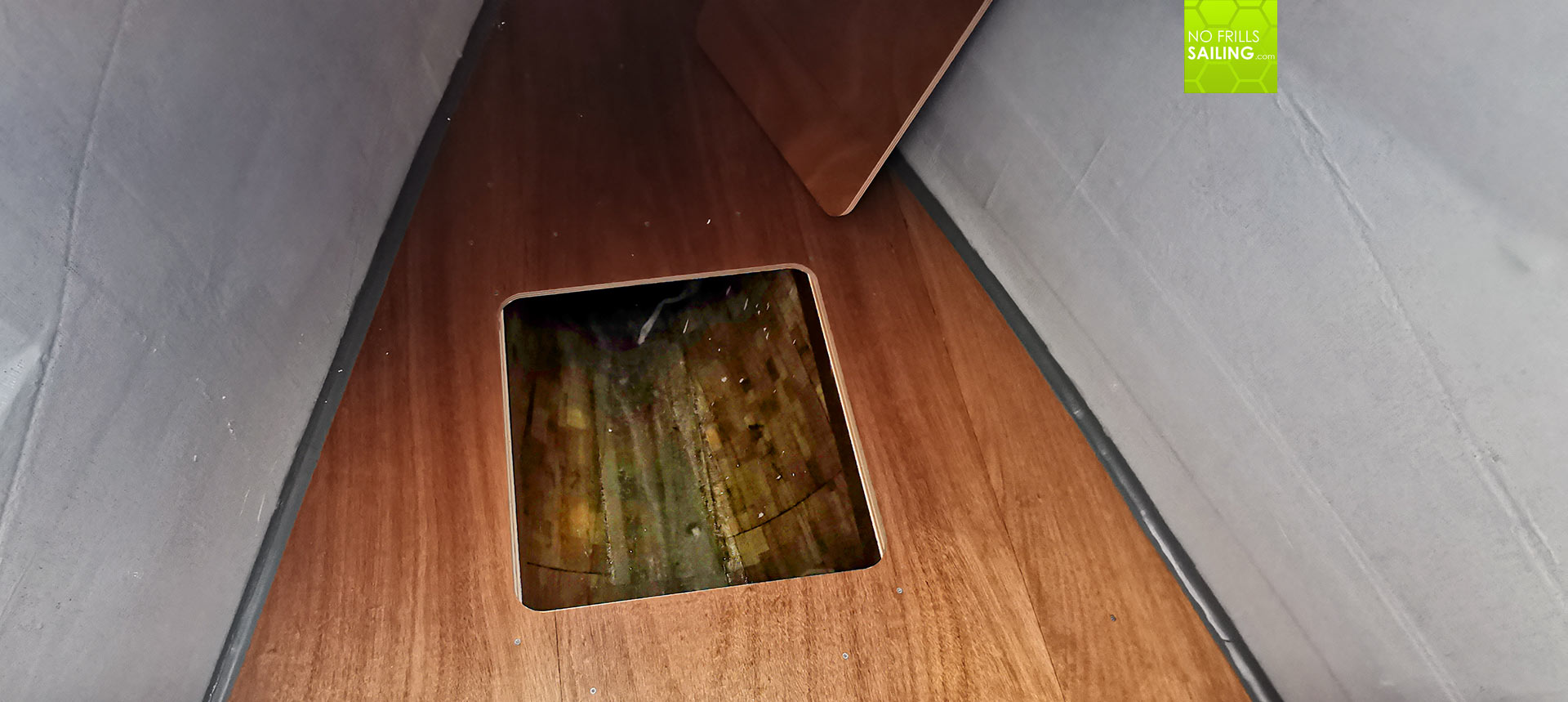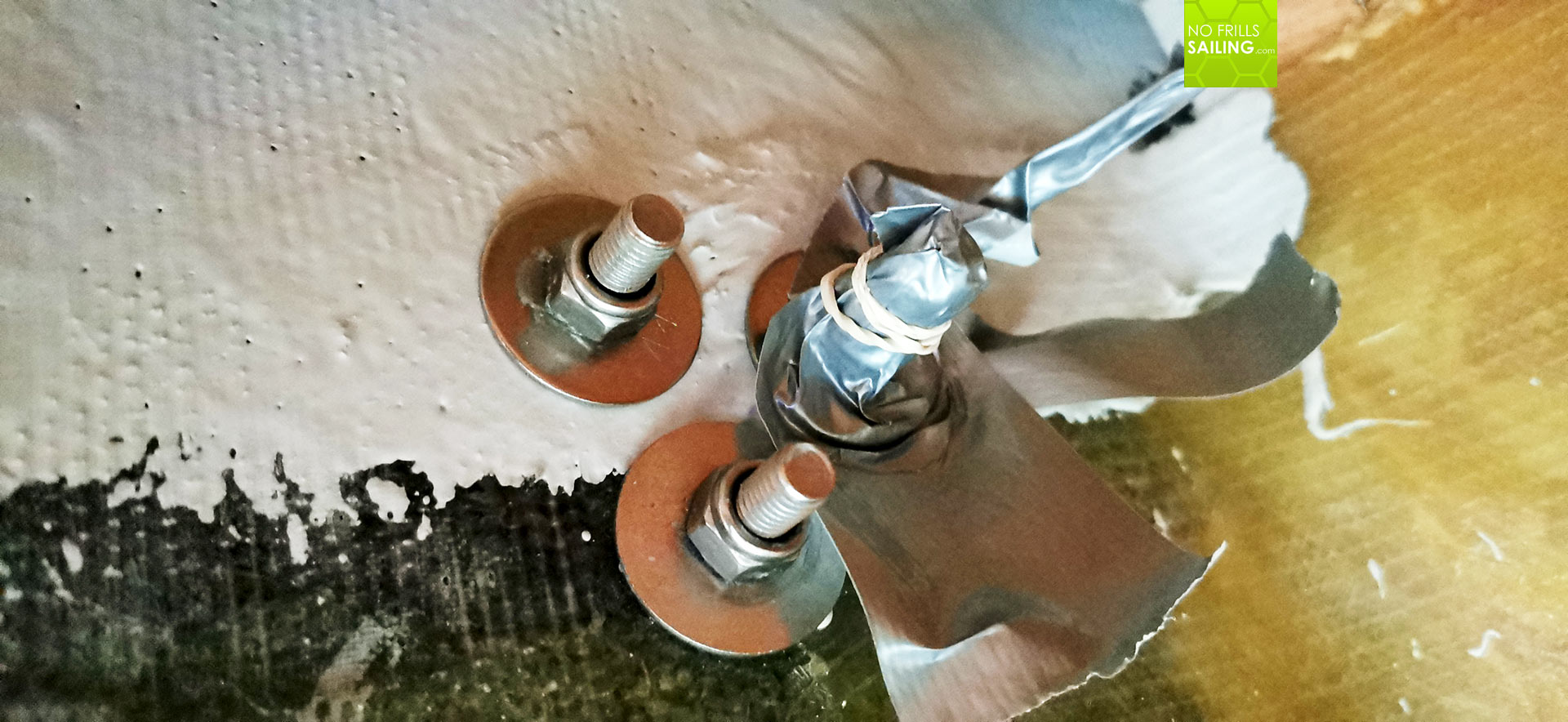That´s a rather unusual story and a very peculiar too. I have long thought about how it could tell it without shaming too much the yard and/or stirring up too many uncomfortable thoughts in clients and owners. In the end I decided to tell it like it is: See, a boat is a 100 per cent hand made product. And with each and every product made by humans, errors can occur. No matter how many lines of quality checks and evaluation you build into that process, there is still a possibility for faults to slip through unseen. That is – a pity, yes, but – natural. Here´s the story of such a flaw that went unnoticed. Unnoticed until … I noticed.

This story takes place on the catamaran RESIDENZ, a brand new Excess 11 I was sailing from the yard and place of watering in Les Sables d´Olonne to her home area, the Baltic Sea. According to my logbook it happened on the fifth day into the journey. The weather was just fine and we made good progress, the boat had just entered the English Channel, course due East into the Channel as wind was slowly dropping, speed as well and we finally took down the sails, powered up the Diesels. It was 0900 in the morning as my watch ended and I went down to take a nap.
Water to the bottom line of the floor panels!
As I went inside the catamaran´s saloon and filed the entry to the log, I pulled myself out of the sailing gear and took a last round sight through the windows and went down the three stairs into the owner´s hull. As captain of this journey I had the privilege to reside in this huge, open space which essentially is one single huge room covering the whole hull. As I went down, I saw a strange flickering through the hole in one of the floor panels. “Strange …”, I thought, kneeled down and opened the floorboard.

„What the ….?!“, I shouted. Immediately right below the floor boards the whole bilge – which is huge on a catamaran – was filled with water! The water was sloshing from one end to another right in line with the motion of the catamaran. So full was the bilge that all of the installations have been drowned already. A short trace of panic, that I of course immediately suppressed, followed by another burst of emotion: “Fuck! Guys, we have a leak!”, I shouted against the noise of the Diesels. My mate Andi, who also had watch below, raced up the stairs of the port side hull and arrived right behind me, crying out loud as well.

I checked if the water level was rising or not: A first attempt to assess the severity of the situation. As I couldn´t spot a difference, we could assume that at least the leak wasn´t that big. Andi had switched on the bilge pump (which we hadn´t set on automatic mode – for a good reason!) and I was astonished that nothing had short-circuited due to the high level of water. It took the bilge some 5 or 8 minutes to empty the hull again and after some more minutes careful watching we could be sure that the leak could not have been that big.
A frantic search for the leak
As the water in the hull tasted salty the leak wasn´t an inside problem with our fresh water supply but must for sure be the Ocean water entering the boat. But from where? Logbook notes: “0930: Water in starboard hull. Salty. Bilge pump works fine. Searching for the leak.” Andi and I started to work our way through the boat. But although this catamaran was a pretty big boat, it was too tight and narrow for us two to look in the same hull so I sent him to “his” hull on the opposite side to check for leaks there: “Bilge is dry.”, he confirmed and I was a bit released: At least not a systematic and symmetric but an isolated problem limited to the starboard hull.

I at first removed all floor boards and began to check all valves. And there are a number of them down here: Cooling water inlet for the engine, inlets for the WC, some outlets and some inlets rendered sealed because they haven´t been used. Could it be a not so good sealed inlet? We dried the whole bilge with crepe paper and waited a couple of minutes. They remained dry. I checked all of the valves, all hoses and all hose clips – nothing. Where is the leak?

„If it is not inside the cabins, it must be outside!“, Andi concluded and he was right. Apart from the “inside” of our hulls, which are the cabins and bathrooms, there are two more compartments in each hull: To the stern the engine rooms and in the bow the skipper´s cabins which on this catamaran (luckily!) haven´t been completed. We first checked the engine rooms: All was dry and nice. So we jumped into the huge front lockers/skipper cabins. On the Excess 11 these lockers have two decks. You have to take out another floorboard and wedge yourself through a little hole to get down to the very bottom of the boat´s bow. “Port side is dry as well!”, Andi shouted. Bot not so in the starboard bow section …

Right upon opening the board I could hear an apparently big amount of water sloshing around. “Not so here: There is water down there!”, I shouted, went back to the saloon and grabbed the search light. Getting down to the bow´s bottom – I had pulled out of my socks and shoes which was wise – I ended up squatting in litres of water. Apparently the leak originated here in the bow and the water must have found its way back to the bilge by flowing through the drainage holes. But where the hell was the leak?
My MacGuyver-moment
“Look outside in the bow area for possible collision damage.”, I asked Andi. Grabbing to the reeling he tried to spot the hole in the bow. Maybe we had run over a wooden log, a floating euro-palette or even collided with a container? I mean, there was a chance and collisions do happen. “Nothing!”, he shouted down after some minutes. At the same time I was searching the inside of the bow section for water coming in – but I found nothing.
So we went up again. As apparently the leak wasn´t an immediate threat we resumed sailing the boat – that was exactly the day we went into the Race of Alderney-trap – and decided to have another look after dinner. It was not until 1700 when we finally found the leak. And it was so … stupid … that we all three had to squeeze ourselves down into the bow again to watch it with our own eyes.

A hollow screw! The origin of the leak was a hollow screw! I couldn´t believe it! I sat in the salty water of the bow compartment, sparsely illuminated by a headlight, and could not believe my eyes: I could clearly see daylight coming through the slim screw. It was one of the three screws of a pad eye that was used for attaching the martingale stay of the bow sprit to the bow. As this pad eye was placed only a few centimetres above waterline, water was able to enter the boat each time the bow was covered in a wave. With each wave a schnapps glass of water sputtered into the hole. I even filmed it as it was so unbelievable. Well. At least we found the origin of our leak – and lucky us, it wasn´t a collision nor a big structural fault. Just some lazy worker in the yard using a hollow screw …

But how to close it? We neither had Sika or any other sealant aboard (which I noted to myself I shall put aboard my own boat from now on) nor a proper screw for exchange. All we had was a roll of Gaffer tape – thanks to Martin who insisted of buying one: “You never know!”, he said and we laughed. Well done, Martin! Down in the bilge I had found a loose screw that was as slim as the hole in the other screw was striding across. I began to make a thin roll of Gaffer tape which I inserted into the hole and plunged it with the narrow screw. A second “makeshift plug” was set this way and the squirting of water stopped.

To finish my MacGuyver´s work I wrapped around the hollow screw a layer of Gaffer tape – not before I dried the whole mess with loads of crepe paper and finally sealed it with rubber band we found somewhere. Well done! I sat there for some minutes and watched the sealed hole. No water was coming through anymore and for now we succeeded in plugging the leak. It won´t hold for long, I was sure and noted to the log book that a decent repair once berthed again would be necessary, at least to replace my Gaffer-plug with some sort of sealant. Texting our technical crew at home what the situation was and sending my video provided for some laughter and headshakes. Nobody ever has seen a hollow screw. What a strange thing to happen, wasn´t it?
Boat is leaking: What we´ve learned
This is how my first leak in a boat ended: We replaced the makeshift plug the coming day as we landed in Le Havre. Looking back at the situation I learned something here: If a leak occurs, stay calm and first check the taste of the water. If it is fresh water, the leak must be inside – so no inherent danger of sinking: There can only be as much water in the boat as much water is in the fresh water tank. If the water tastes salty, be alarmed: Somewhere somehow the Ocean enters the inside of your boat! Now, stay calm and check for severity. First, stop the boat. Release as much pressure from the hull as possible. At least reduce speed. Second, is the water level rising fast? If so, the leak must be big and urgent action is required. Check all seacocks on the bottom of the ship – and check bow section for collision damage.

A thorough, calm but systematic search for the leak from bow to stern will certainly reveal the source of the water inside your boat. If you have found it, come up with a quick solution to stop the leak, a really simple but effective makeshift. You will have time to think about a more professional and tenable solution later. Do not panic. As long as there isn´t tons of water gargling into the boat, act structured and professional. As for our catamaran crew, we came out of our leak-episode quite happy with a smile. Apparently, the yard had messed up the screw here – small error, big outcome. But also again a good example that boats are very complex conglomerates of hundreds of thousands of small pieces – put together by living people. Not by robots. I am not angry about the yard and the workers, I am just happy we spotted the leak and have been able to seal it. As my logbook notes: “0300: Leak is sealed, Alderney survived, now enjoying a fantastic starry sky.”
You may as well be interested in:
Practicing the Man overboard procedures
First Aid on boats
How to escape a capsized catamaran
